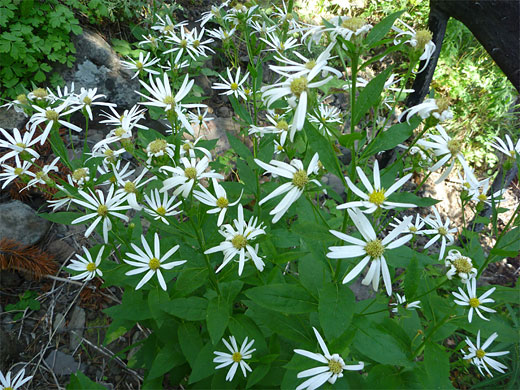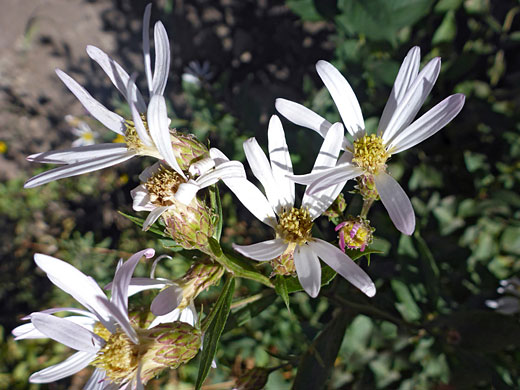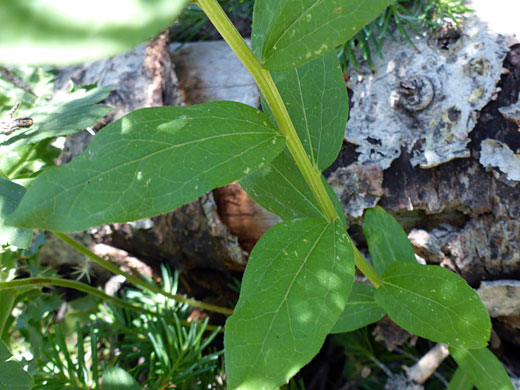Eucephalus Engelmannii, Engelmann's Aster
Plants > Wildflowers > Asteraceae > Eucephalus Engelmannii
Common name:
Engelmann's aster
Family:
Scientific name:
Eucephalus engelmannii
Synonym:
Aster engelmannii
Main flower color:
Range:
The northern Rocky Mountain states, plus northeast Nevada and small areas in Washington
Height:
Up to 5 feet
Habitat:
Meadows, open places in woodland; 1,700 to 9.800 feet
Leaves:
Lanceolate and relatively wide; up to 4 inches long and 1.5 inches across. Stalkless, with prominent veins
Season:
June to September
The large, green, prominently veined leaves of eucephalus engelmannii grow mostly in the middle and upper portions of the stems, which are thick and rigid, reach heights of 5 feet and branch towards the top. The stems are lightly hairy, the leaves mostly hairless.
Flowerheads are pure white or pale pink (becoming darker when mature), with between 8 and 17 thin ray florets (about 2/3 inch long) and a cluster of yellow disc florets at the center; they often have a somewhat untidy appearance due to missing or bent rays. Pauppus bristles are pure white, and are lined with small barbs.
Beneath the flowerhead are 4 to 6 rows of different-length phyllaries, generally colored light green, but darker green down the middle, and reddish along the edges, especially those towards the top. The lowest phyllaries are the longest, and are more likely to bend away from the involucre. Phyllary tips are pointed, and the surfaces may be hairless or lightly hairy.
Flowerheads are pure white or pale pink (becoming darker when mature), with between 8 and 17 thin ray florets (about 2/3 inch long) and a cluster of yellow disc florets at the center; they often have a somewhat untidy appearance due to missing or bent rays. Pauppus bristles are pure white, and are lined with small barbs.
Beneath the flowerhead are 4 to 6 rows of different-length phyllaries, generally colored light green, but darker green down the middle, and reddish along the edges, especially those towards the top. The lowest phyllaries are the longest, and are more likely to bend away from the involucre. Phyllary tips are pointed, and the surfaces may be hairless or lightly hairy.
All Contents © Copyright The American Southwest | Comments and Questions | Contribute | Site Map













